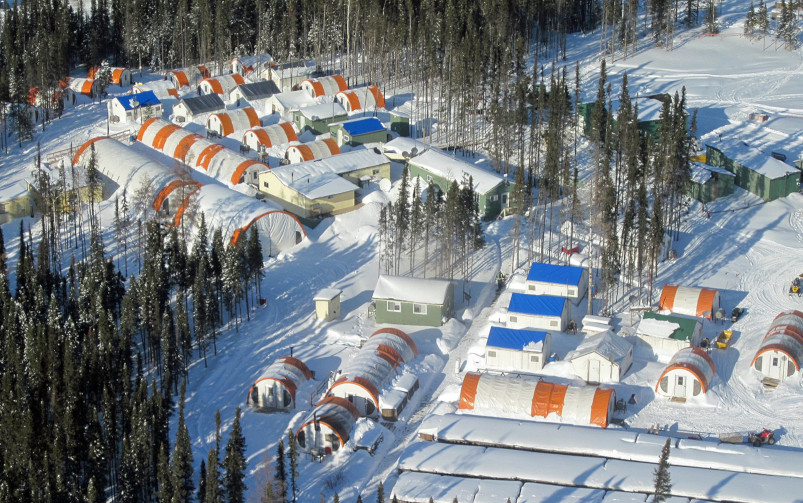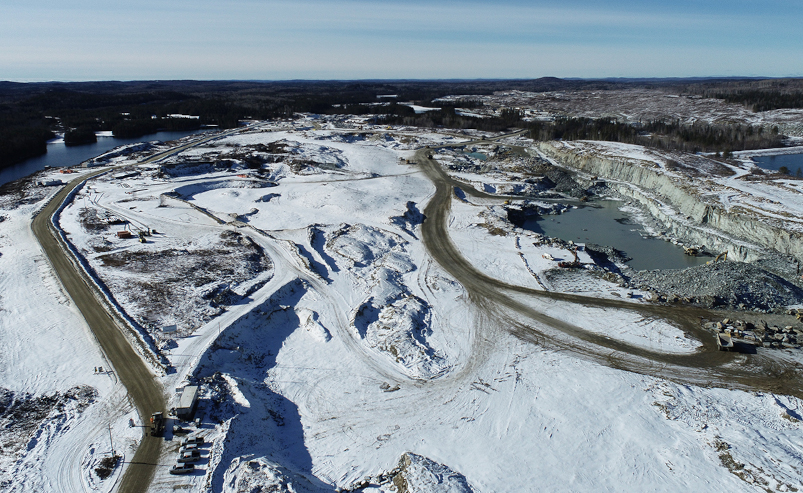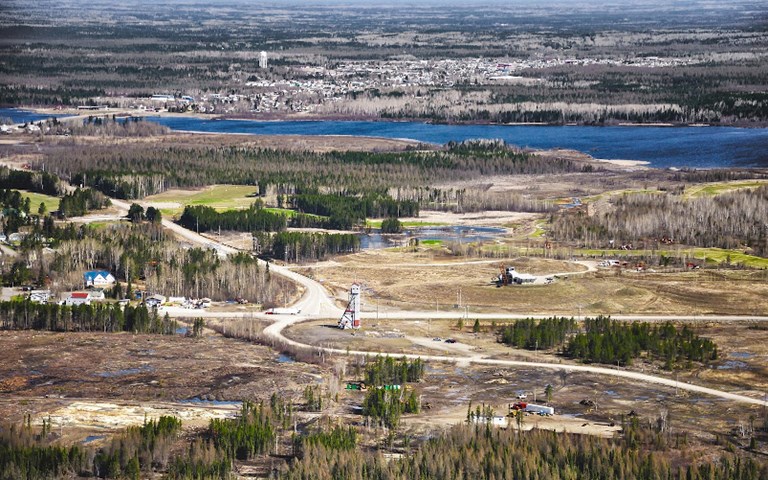Ontario's Skills Development Fund is investing $3.6 million to train up to 150 Indigenous job seekers to work at Greenstone's gold project located south of Geraldton. Courtesy of Greenstone Gold Mines.
Editor's note: In the original version of the Recap, it was unclear that the workers returning to Agnico Eagle's Nunavut operations were Nunavut residents and that the mine had been continuously operating since those workers had been sent home last spring. We apologize for the error.
Welcome back to your weekly mining news recap, where we catch you up on some of the news you may have missed. This week we have stories about a bill that will see UNDRIP be harmonized into Canadian law, a grant for Equinox Gold to train Indigenous workers and a new method for assessment of risk at tailings storage facilities.
The Canadian Senate has approved a bill that align Canada’s laws with the U.N. Declaration on the Right of Indigenous People (UNDRIP), CBC reports. UNDRIP, among other things, calls for free, prior and informed consent (FPIC) from Indigenous Peoples on anything that infringes on their lands or rights. Justice Minister David Lametti commented that "[what] we're trying to do is treat FPIC as a process, which I think is true to the wording in the declaration itself, and really put the onus on non-Indigenous governments, non-Indigenous resource developers, private industry, whoever – to meaningfully consult with Indigenous Peoples in whatever context is appropriate."
Karen Chovan, founder of Enviro Integration Strategies Inc., describes some of the challenges facing the evaluation of risk at tailings storage facilities (TSF) and provides a rundown of her new method for assessing and tabulating the risk of TSF. The method, which is intended to provide a universal metric that can be understood by non-technical experts, evaluates TSF according to 45 criteria to provide an estimated annual probable rate of failure, which is then cross-referenced with the consequences of failure to provide the final risk rating.
Trevali’s Caribou mine was put into care and maintenance in March of last year due to the COVID-19 pandemic and a consequent drop in zinc prices, but Trevali says the plan was always to restart it, as it did this March. As part of its restart plan, the company replaced its fleet of scoops and trucks, replaced the ball mill liners and is also studying a new oxidized leaching processing methodology to produce zinc metal rather than concentrate, a process which CEO Ricus Grimbeek says will allow them to increase their zinc recovery from 80 per cent to around 92 per cent. The company is also in talks with the New Brunswick government for permission to construct a factory that makes zinc oxide batteries.
Hancock Prospecting’s Grassy Mountain project, a proposed metallurgical coal mine in the Alberta Rocky Mountains, has been dealt a major blow after Canadian regulators judged the mine was not in the public interest, Reuters reports. A federal and provincial review panel said in a report that the potential negative consequences on water and wildlife outweighed the potential economic gains. Canadian environment minister Jonathan Wilkinson will take the report by the panel into consideration before issuing a final decision on the project by November.
Nunavut resident workers at Agnico Eagle operations in the territory will commence gradually returning to work over the next two to three weeks, CBC reports. The miners have been off work since last spring with 75-per cent pay to prevent COVID-19 spreading to Nunavut communities, though the mine has continued to operate since then, and will start to return in a series of stages, initially on a voluntary basis.
The Tahltan Central Government has begun talks with B.C. on a consent-based decision making agreement over the environmental assessment approval of the restart of Eskay Creek mine and an expansion of the Red Chris mine, My Bulkley Lakes Now reports. The agreement will be negotiated under the Declaration on the Rights of Indigenous Peoples Act (DRIPA) and will include stakeholders in the negotiation process, including Skeena Resources Limited, Regional District of Kitimat-Stikine and the Association for Mineral Exploration.
Equinox Gold’s Greenstone Gold Mines will receive $3.6 million from the Ontario government to train up to 150 Indigenous people for work on the $1 billion project near Geraldton, Ontario, Northern Ontario Business reports. The funding comes from Ontario’s $115-million Skills Development Fund, with training sessions for prospective workers from the Animbiigoo Zaagi'igan Anishinaabek, Aroland and Ginoogaming First Nations, starting June 28.
A massive diamond of 1,088 carats has been put on display in Botswana, two weeks after being unearthed by diamond company Debswana, BBC reports. It is thought to be the third-largest diamond ever discovered and is only slightly less heavy than the second-largest, “Lesedi La Rona,” which sold for US$53 million in 2017.
Kinross Gold announced that it will be temporarily suspending mill operations at Tasiast mines due to a fire on site. Kinross reports that it is currently partnering with government authorities to investigate the causes of the fire and the potential impact on its operation and will provide further updates upon completing those assessments.
Rio Tinto Fer et Titan announced the opening of a new scandium oxide plant at its metallurgical complex near Sorel-Tracy, Quebec. The plant, whose construction was partially funded by the Quebec Plan for the Development of Critical and Strategic Minerals, is intended to meet 20-per cent of global demand for scandium, and is the first of its kind in North America.
That’s all for this week! If you’ve got feedback, you can always reach us at editor@cim.org. If you’ve got something to add, why not join the conversation at our Facebook, Twitter or LinkedIn pages? Like your recap with a few more gifs? Check out our mining news recap stories on our Instagram.




